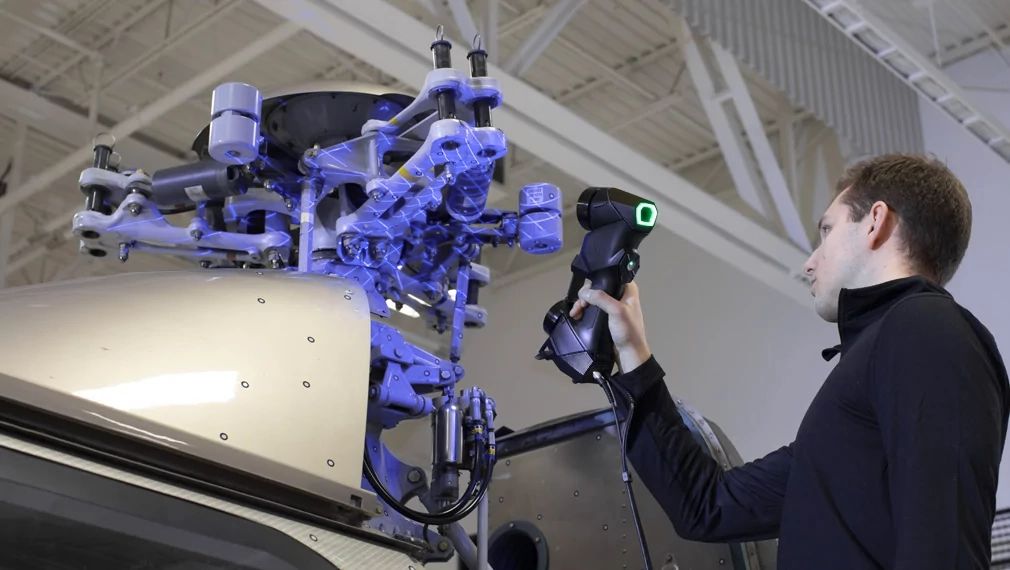June 28, 2024
A New Dimension of Quality: Georg Utz Holding AG Transforms Quality Control Processes with Go!SCAN 3D See the articleHeavy construction equipment refers to large, heavy-duty machines used in the construction industry for different purposes. This robust machinery includes excavators for digging and trenching, bulldozers for pushing soil and sand, loaders for transporting materials, backhoes for both digging and backfilling, cranes for lifting and moving heavy materials, dump trucks for hauling and dumping materials, motor graders for leveling and grading surfaces, compactors for compressing soil, pavers for laying surfaces, drilling rigs for creating holes, and concrete mixers for mixing and transporting concrete.
According to the Global Heavy Construction Equipment Market Research Report, the heavy construction equipment market was valued at USD 195.04 Bn in 2023 and is predicted to reach USD 273.94 Bn by 2031 at a compound annual growth rate (CAGR) of 4.48% during the forecast period 2024-2031.
Factors Driving the Expansion of the Heavy Construction Equipment Market
As the population grows and more people move to urban areas, there is a rising need for infrastructure development, including roads, bridges, buildings, and public utilities. Many governments invest in infrastructure projects worldwide to stimulate economic growth and improve public services. These investments often involve large-scale construction projects that require heavy equipment. The ongoing need to refurbish or replace aging infrastructure also supports this market growth.
The integration of new technologies into heavy construction equipment, such as GPS, IoT, and automation, has increased efficiency and productivity, making these machines more attractive to construction companies. According to Volvo, construction equipment manufacturers are starting to mirror Silicon Valley tech firms, advancing in telematics, autonomous machinery, and electromobility—to name just a few.
Furthermore, stricter regulations and a growing awareness of the need to reduce carbon emissions have led to a willingness to adopt renewable energy sources and electrify construction machinery, which creates new possibilities and openings in the industry. Finally, the increasing demand for resources, such as minerals, ores, and rare metals, drives the need for heavy construction equipment used in mining operations.
Opportunities Arising from Market Growth
The growth of the heavy construction equipment market presents significant opportunities for major players, such as Caterpillar, Liebherr AG, Terex Corporation, Volvo Group, and Komatsu, to expand their businesses and strengthen their market positions by entering emerging economies where infrastructure development is a priority.
They can also capitalize on the expanding market by innovating and improving their product offerings, incorporating advanced technologies such as automation, telematics, and electrification. One thing is certain, though: the quality of their machines must remain impeccable.
Quality Defects are Expensive
Every heavy equipment machine is expensive, and every hour wasted on a construction site due to quality issues is costly. Heavy equipment presenting quality defects leads to higher maintenance and repair costs for customers, resulting in warranty claims and the need for manufacturers to provide additional support, which can also become very costly.
Warranty Claims Eating Into Profit Margins
Major heavy equipment manufacturers often measure their product quality with the number of warranty claims they receive. When resources are spent on managing warranty claims, they cannot be used for other profit-generating activities, such as new product development or new market penetration. This represents an opportunity cost that can impact the company’s overall profitability. Moreover, frequent warranty claims can harm a company’s reputation and lead to a loss of customer trust and loyalty, decreasing its sales and market share.
Identifying the Root Cause Quickly and Efficiently…
When a technical problem occurs, such as a vibration, the quality assurance department is called in, like firefighters, to put out the fire and identify the root cause. But this task is not always easy when you don’t know what you are looking for. Added to this challenge is the fact that heavy equipment machines are made of huge parts with complex freeform shapes.
Using manual tools, such as a measuring tape or a caliper, to find where a vibration comes from can quickly become daunting—the same observation is valid with a measuring arm that can only probe points here and there. Measuring the dimensions of a handling machine’s engine hood with a defined grid—probing one point on each corner—can take at least one working day. And despite all this work, the quality department does not have the overall picture of the part to conduct its investigation.
With a scanning solution, however, quality professionals can capture the complete 3D dimensions of surfaces, regardless of size and complexity. Then, they can compare these 3D models with the CAD and quickly see where there are discrepancies. They can also check critical features, such as the position of holes and the alignment of axes. 3D scan data makes them much better equipped to identify the root cause and rapidly solve the technical issue described in the warranty claims.
…to Reduce Warranty Claims
Having quality 3D data in large quantities to recreate complete 3D surfaces enables the quality assurance department to address the root causes of product defects effectively. Since resources are limited and there are only 24 hours in a day, it is important to have access to this accurate 3D data quickly to diagnose and resolve technical issues faster than they accumulate.
As the fires go out, heavy equipment manufacturers will be able to shift their focus from reactive quality assurance and troubleshooting to proactive quality control. This inspection process aims to ensure that the welded parts adhere to a defined set of quality criteria before assembling them and shipping the final machines to customers.
Investing in quality control inevitably results in better-quality products that are less likely to malfunction or break down. This enables heavy equipment manufacturers to reduce the costs associated with warranty claims, repairing or replacing products, and handling customer complaints. Higher-quality products are also more likely to meet and even exceed customer expectations.
We all know that satisfied customers are more likely to become repeat buyers and refer others, thus increasing sales revenue. Having a reputation for quality can also bolster a company’s brand image, making it more appealing to customers and potentially leading to an increase in market share. A brand name synonymous with quality also allows companies to maintain higher prices and benefit from higher margins. Customers are generally willing to pay more for durable and reliable machines that perform well. In short, improving quality has a direct impact on the profit margins.
Confidence in 3D Data
Still, quality professionals must believe in the reliability of the measurement data rather than continually challenge and discredit their accuracy.
To no longer question the reliability of 3D data within your workgroup, read our following content:
Do you have confidence in your 3D measurements? Are you certain they are accurate, repeatable, and reliable?















